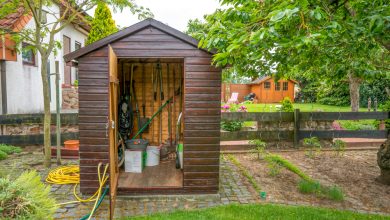The Importance and Advantages of Soil Preparation for Planting

It may appear simple to dig a hole, set a plant in it, and cover the roots with the same dirt. However, soil supplements can help most soils.
Too much sand in the soil allows them to drain too fast. Too much clay in the soil makes it difficult for water and plant roots to penetrate. The ideal soil, referred to as loam, is crumbly and aerated, with high humus (organic) content. Plant roots may travel vast distances in search of nutrients in loamy soil, supporting robust leaves and an abundance of brilliant blooms.
That same soil, though, maybe greatly improved with relatively little work. As a result, the plants will establish themselves more rapidly, and develop quicker, stronger, and healthier.
The soil will be improved in the following ways:
- Increase the porosity of the soil to allow more water and nutrients to enter the root zone.
- When opposed to hard, crusty soil, runoff is reduced.
- Ensure that the plant roots have access to oxygen.
- Encourage roots to stretch out and form a strong subterranean network to absorb essential nutrients and water.
Some manufacturers create a general-purpose Garden Soil that may be used in place of do-it-yourself topsoil, peat, and manure for excellent results. It’s suitable for growing both annual and perennial flowers. It includes plant food already mixed in the soil and will offer the vital nutrients you need to enhance soil condition and manage moisture.
Fertility of the Soil
Plants need soil to grow and blossom because it not only anchors them but also contains the moisture and nutrients they require. The right balance of three key plant nutrients, nitrogen, phosphorus, and potassium, is found in healthy soil. The fertilizer requirements of flowering plants are often lower than those of vegetables. However, applying a granular fertilizer to the soil surface and raking or watering it at the start of the season is an excellent insurance policy. The more quickly a plant grows, the more fertilizer it needs. If you’re unsure about your soil’s fertility, choose a fertilizer that contains twice as much nitrogen as phosphate and potassium.
The pH of the soil
A soil’s pH is a measurement of its acidity or alkalinity. Acidic (low-pH) soil is common in wooded regions, whereas alkaline soil is common in deserts (with high pH). Although certain blooming plants may thrive in one type of soil over another. The majority of the plants indicated here will thrive in a variety of soils.
Ask a gardening neighbor, buy an affordable soil test kit, or send a soil sample to a laboratory approved by your county agricultural agent to assess the pH of your soil. Your soil may be tested for free at several garden centers. Lime (for acid soil) or sulfur (for alkaline soil) can be used to make minor pH modifications (to alkaline soil). If your soil pH is too high, however, correcting it may be impossible; instead, grow your garden on raised beds filled with nursery dirt.
Soil Cultivation
The roots of most garden-worthy blooming plants require a good depth of loose, crumbly soil in order to travel great distances in search of water and nutrients. Fortunately, most blooming plants do not require the same level of care as veggies do. A flower garden, even one filled with blooming trees and bushes, maybe dug to a depth of one foot — around one spade length.
Soil Preparation
It’s a good idea to prepare the soil in good shape before putting plants in the ground. A great flower garden will be difficult to achieve without adequate soil. Plants need soil to grow and blossom because it not only anchors them but also contains the moisture and nutrients they require. Soil that is too sandy allows these to drain too fast, while soil that is too clayey makes it difficult for water and plant roots to penetrate. The ideal soil, referred to as loam, is crumbly and aerated, with high humus (organic) content. Plant roots may travel vast distances in search of nutrients in loamy soil, supporting robust leaves and an abundance of brilliant blooms.
To improve the loamyness of your soil. You’ll need a lot of humus (organic) material, such as compost, well-decomposed animal manure, leaf mold, or peat bales. Even well-maintained soils need to be replenished with organic matter at least once a year. Because the natural processes of the sun, wind, and rain tend to remove nutrients from the soil and compact it. Soil conditioners can also aid in soil preparation that is too acidic or alkaline. Some blooming plants may be hampered by this.
Leaf mold is the most useful of the most regularly used soil conditioners. Because it can store a lot of moisture and provides a lot of nutrients. The least desirable is peat, which is devoid of nutrients. Purchase peat or manure from a garden center, or go through classified ads in the newspaper for less-priced compost. Because leaf mold is so valuable as a soil conditioner, many nurseries keep it for themselves and rarely sell it.
You may manufacture your own by stacking leaves in a garden corner and allowing them to decompose down into light, fluffy, and rich humus. Shred the leaves using a lawnmower or leaf shredder first to speed up the process. Simply run the blades over little mounds of leaves if you’re using a lawnmower. Spread the soil preparation conditioner to a depth of 3 to 4 inches on the soil surface, then rake it in.
Comb the soil surface with the prongs of a garden rake after cultivating it to the depth of a garden spade. Break up any clods and make the surface even finer with the flat back of the rake. Before raking, sprinkle granules over the soil surface at the rate specified on the box for applying fertilizer. Avoid walking on freshly excavated Soil preparation. Place a wooden board down to cushion your weight if you must do so in order to plant.
How to Improve Soil
There are two straightforward methods for improving your soil:
Cover the planting bed with enriched soil or additives and till them in.
In a mixing bowl, combine the enriched soil or amendments with the dirt that has been taken from the planting holes.
Almost any soil may be turned into a planting space for your flowers using either approach.
If you’re making a new flower bed in a confined space, you may as well dig it out and refill it with the right kind of soil.





